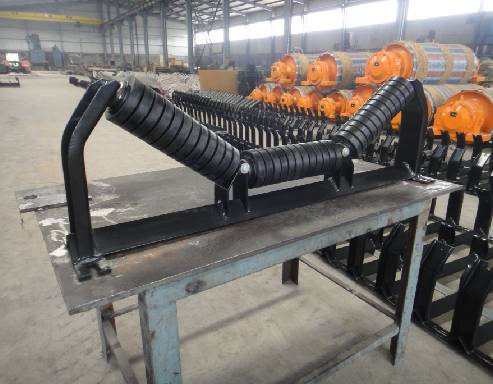conveyor idler frames
Understanding Conveyor Idler Frames Key Components for Efficient Material Handling
Conveyor systems are essential in various industrial applications, facilitating the movement of materials over arbitrary distances and terrains. One of the critical components of any conveyor system is the conveyor idler frame. Understanding the role and construction of these frames is vital for optimizing the performance and longevity of conveyor systems.
What is a Conveyor Idler Frame?
A conveyor idler frame acts as the support structure for idlers—the rotating components that help guide and stabilize the conveyor belt. These frames are strategically designed to hold idlers in place and ensure the belt operates smoothly. Typically made from robust materials such as steel or aluminum, idler frames must withstand the weight of the materials being transported, as well as the stress induced by the movement of the conveyor belt itself.
Importance of Idler Frames in Conveyor Systems
Idler frames are integral to the efficient functioning of conveyor systems for several reasons
1. Belt Alignment Proper alignment of the conveyor belt is crucial for preventing wear and extending the lifespan of both the belt and the idlers. Well-designed idler frames help maintain the correct positioning of idlers, which aids in keeping the belt on track.
2. Load Distribution Idler frames distribute the load evenly across the system, reducing localized stress that could lead to premature failure. This load distribution is particularly important in heavy-duty applications where large volumes of materials are transported.
3. Stability and Support A stable idler frame reduces vibration and supports the weight of the belt and materials more effectively. This stability contributes to smoother operation, reducing maintenance needs and downtime.
4. Durability High-quality idler frames are resistant to wear and environmental factors. They are designed to withstand harsh conditions, such as dust, moisture, and temperature variations, ensuring a reliable operation over time.
conveyor idler frames

Types of Idler Frames
Conveyor idler frames come in various designs, each tailored for specific applications and industry requirements
- Troughing Idler Frames These frames facilitate the formation of a trough shape in the belt, allowing for better containment of materials. This design is ideal for bulk material handling.
- Flat Idler Frames Suitable for lighter applications, flat idler frames provide a straightforward support structure without the troughing contour.
- Garland Idler Frames Used in applications requiring flexible alignment, garland frames consist of several idlers that can help absorb minor inconsistencies in alignment and load.
- Heavy-Duty Idler Frames Designed to support particularly heavy loads, these frames are constructed with thicker materials to ensure they can handle increased stress without deformation.
Maintenance and Considerations
Regular maintenance of conveyor idler frames is vital for ensuring long-term stability and performance. This includes routine inspections for wear and tear, ensuring that all components are adequately lubricated, and verifying the alignment of the idlers. Additionally, when selecting an idler frame for a specific application, consider factors such as load capacity, material type, and environmental conditions to ensure optimal performance.
Conclusion
Conveyor idler frames are more than mere supports; they are crucial components that directly influence the efficiency and longevity of conveyor systems. By understanding their role, types, and proper maintenance practices, businesses can maximize their investments in conveyor technology, ultimately leading to smoother operations and enhanced productivity. Whether for bulk material handling, packaging, or manufacturing processes, idler frames significantly contribute to the success of modern industrial operations.
-
Impact Roller for Belt Conveyor – Durable Solutions for IndustryNewsNov.24,2025
-
Rubber Conveyor Rollers – Quiet, Durable, Sealed BearingsNewsNov.24,2025
-
Industrial Conveyor Belt Rollers: Durable Solutions for Harsh EnvironmentsNewsNov.24,2025
-
Idler Rollers for Belt Conveyors | Durable, Low-Noise OEMNewsNov.24,2025
-
Durable Rubber Conveyor Belt Rollers for Industrial UseNewsNov.24,2025
-
Ceramic Lagging Conveyor Pulley – Anti-Slip, Wear-ResistantNewsNov.17,2025






























